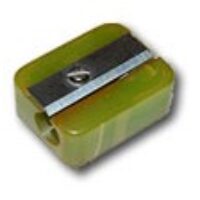I’ve lamented before the disappearance in our time of the Tinkerer, that fix-everything general technology expert of ages past. I ran into a demonstration of how far he’s gone the other day when shopping online for a new bluetooth hands-free cellphone car kit (my old one conked out, and fixing it would of course have cost more than buying new – another sign of our times).
I found on Amazon the Motorola T305 Bluetooth Speaker, and dug into its customer reviews. Turns out it has excellent audio quality, but there was a recurring complaint: people hated its big, intense blue light, which at night would blink very distractingly at the edge of the driver’s field of vision. 
The discussion among reviewers was about whether the blue light was terribly distracting, mildly distracting, or maybe you could get used to it after a while. What amazed me is that none of the reviewers I read (admittedly, only a sample of almost 300 of them) had done the obvious thing – solve the problem by tinkering with the device. This could be done in two minutes, tops: all you’d need is to cover the light with a sticker, which can be cut to measure from paper, or some masking tape, or – if you’re so inclined – a thin gold foil with inlaid silver patterns. Anything opaque to light would do. Or if you still want to see the light, but at lower intensity, you could punch a small hole in the sticker, or use a semi-transparent dark material instead of tape. Once you did that you’d have the great sound quality and none of the annoyance.
The fact that this obvious idea never occurred to anyone is disturbing indeed. We’ve become so accustomed to ready made products that the notion of improving them to serve us better is entirely gone! 🙁



 The issues shown are from September 1969, June 1983, and October 2009. The difference in thickness is striking indeed: 10.6, 5.3 and 2.2 millimeters respectively. As far as pages go, the counts are 288, 156 and 72. What happened??
The issues shown are from September 1969, June 1983, and October 2009. The difference in thickness is striking indeed: 10.6, 5.3 and 2.2 millimeters respectively. As far as pages go, the counts are 288, 156 and 72. What happened?? Is this good or bad? Admittedly there’s some attractiveness in ad-free reading; on the other hand, clearly it’s bad for the publisher, and may explain the paucity of real content. It may also explain the cost per page: issue price rose from $1 to $2.50 to $5.99, which is almost constant in normalized present day dollars; but we get less and less pages and articles for this investment.
Is this good or bad? Admittedly there’s some attractiveness in ad-free reading; on the other hand, clearly it’s bad for the publisher, and may explain the paucity of real content. It may also explain the cost per page: issue price rose from $1 to $2.50 to $5.99, which is almost constant in normalized present day dollars; but we get less and less pages and articles for this investment.
